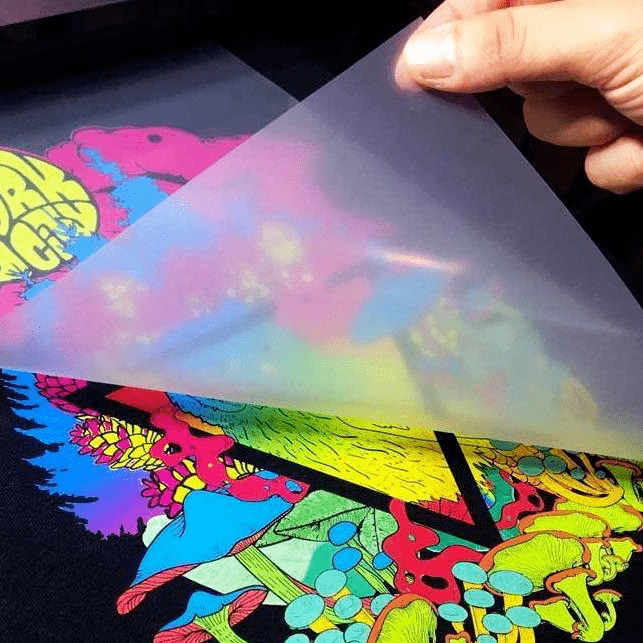The Ultimate DTF Printing Guide: Methods, Products, and Applications
Understanding DTF Printing: Tips and Tricks for Getting Vibrant and Durable Prints
In the globe of fabric printing, attaining durable and vibrant prints is a sought after skill that can raise the top quality of your output. From selecting the best materials to tweak print settings and refining post-printing completing strategies, there are numerous factors that can affect the outcome of your prints.

DTF Printing Basics
For those new to the globe of fabric printing, recognizing the fundamentals of DTF printing is important to grasping this ingenious strategy. Direct to Movie (DTF) printing is a modern technique that involves transferring layouts from a special film onto numerous fabrics using a warmth press. Unlike standard methods like display printing, DTF uses advantages such as vivid colors, intricate describing, and the ability to publish on diverse products like cotton, polyester, and blends.
The process starts by printing the layout on a special DTF movie using a suitable printer with CMYK or CMYKW ink sets. As soon as the design is published, it is then treated with a heat press to produce a durable and durable print. DTF printing is known for its capacity to reproduce intricate designs with high precision and shade accuracy, making it a prominent selection for companies aiming to create custom-made apparel, marketing products, and more.
Selecting the Right Products

Just as vital is the option of the glue powder. The sticky powder functions as a bonding agent between the printed layout and the material, so it needs to have strong adhesion residential or commercial properties to guarantee a durable and long-lasting transfer. Various materials may call for various kinds of glue powders, so it is critical to match the powder to the textile type for optimal outcomes - DTF Printing. By very carefully choosing the appropriate products for DTF printing, printers can enhance the top quality, vibrancy, and long life of their prints.
Optimizing Publish Settings
When intending to accomplish the best results in DTF printing, meticulous interest to maximizing print settings is critical for guaranteeing precise and top notch transfers onto textiles. When enhancing print setups is the resolution, one key element to take into consideration. Higher resolutions normally cause sharper and much more in-depth prints, enhancing the general top quality of the transfer. Additionally, adjusting the ink thickness can aid attain dynamic shades and make certain that the layout stands out on the material.
While enhancing the speed can boost performance, it might jeopardize the final print's clarity and shade saturation. Trying out with various speeds and observing the results can aid figure out the ideal setting for each print work.
In addition, adjust color accounts and making certain appropriate color monitoring are necessary for accomplishing constant and accurate shades across various prints. By calibrating color setups and profiles, printers can decrease color deviations and generate uniform outcomes, enhancing the total print high quality and customer contentment.
Preparing Artwork for DTF Printing
Transform the art work to CMYK shade setting to ensure that the colors translate accurately from screen to print. Bear in mind to mirror the last design before printing to ensure that it transfers correctly onto the garment. By following these steps and paying close interest to the details, you can prepare artwork that is optimized for resilient and dynamic DTF prints.
Post-Printing Finishing Methods
Carrying out effective post-printing ending up strategies is important to enhancing the durability and aesthetic charm of DTF prints on textiles. As soon as the printing process is full, using heat to the published style is essential.
After warmth pressing, peeling the family pet film meticulously is an essential step. This procedure must be done gradually and gradually to avoid any kind of damage to the print. As soon as the film is gotten rid of, the print may require extra curing time to additionally set the ink right into the fabric. This step aids improve the washability and durability of the print, ensuring it can hold up against several clean cycles without fading or breaking.
In addition, cutting any excess film around the style can offer the final print a clean and expert look. Putting in the view website time to properly complete DTF prints post-printing can dramatically impact the overall high quality and durability of the fabric layout.

Final Thought
To conclude, mastering DTF printing requires an extensive understanding of the fundamentals, picking ideal products, optimizing print settings, preparing artwork effectively, and utilizing post-printing finishing methods. By complying with these ideas and techniques, one can attain long lasting and vivid prints that fulfill their wanted top quality requirements. Constant method and interest to detail are vital in accomplishing successful outcomes in DTF printing.
From selecting the appropriate products to adjust print setups and perfecting post-printing ending up strategies, there are countless variables that can affect the result of your prints. Unlike conventional methods like display printing, DTF uses advantages such as published here dynamic colors, detailed describing, and the capability to print on varied materials like cotton, polyester, and blends.
Once the layout is published, it is then cured with a warmth press to produce a durable and long lasting print.When aiming to attain the finest results in DTF printing, thorough interest to optimizing print setups is important for guaranteeing precise and high-grade transfers onto fabrics.In conclusion, understanding DTF printing needs a thorough understanding of the essentials, selecting ideal materials, maximizing print settings, preparing art work effectively, visit site and making use of post-printing finishing methods.